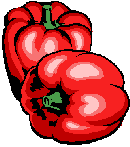
Also call:

 | DESCRIPTION
|
A white flesh root vegetable closely related to the swedes.
 | HISTORY AND ORIGIN
|
The turnip is a prehistoric vegetable which was grown in
the South-East Asia Region around the 10 000 BC. It was used as a
medicinal purpose as well as food source. Both the leaves, stalks and
the root can be eaten.
 | BUYING AND STORAGE
|
Select round, smooth skin turnip which is firm.
Avoid softness and dryness. Refrigerate turnips wrapped in plastic bag
and will keep up to 1 week or can be store in a well-ventilated area.
 | PREPARATION AND USE
|
Wash and peel turnip. Leave whole, slice or
chop. Use in salads, stew and can be roasted. Both the stalk and
root can be eaten.
 | NUTRITIONAL INFORMATION
|
An excellent source of vitamin C and a good source of
dietary fibre.
 | MAJOR NUTRIENTS |
-
-
SERVING SIZE: 100 grm
-
| * ENERGY: |
81 |
kj |
* IRON: |
|
grm |
| * PROTEIN: |
1 |
grm |
* POTASSIUM: |
|
grm |
| * FAT: |
|
grm |
* CALCIUM: |
|
grm |
| * CARBOHYDRATE: |
3 |
grm |
* VITAMIN A: |
|
ug |
| * DIETARY FIBRE: |
3 |
grm |
* VITAMIN B: |
|
mg |
| * SODIUM: |
24 |
grm |
* VITAMIN C: |
16 |
mg |
 | VARIETY
|
PURPLE TOP: Large globe shape
with white base and purple top.
WHITE TOP: Large globe shape with
white base and top.
WHITE STONE:
|




